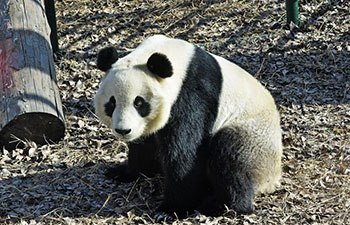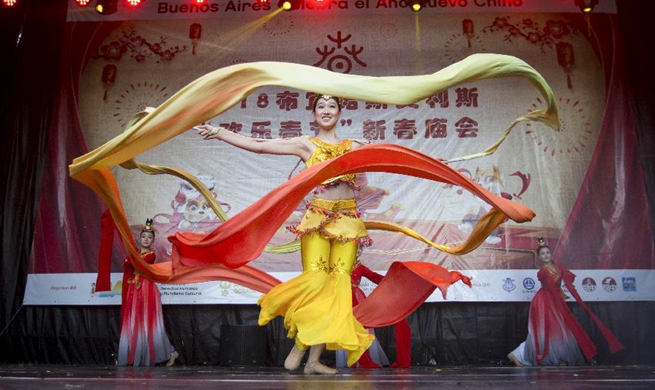WASHINGTON, Feb. 12 (Xinhua) -- A new research published Monday in the Journal of Experimental Biology shows that some spiders known as flattie spiders can sense prey approaching from any direction and whip around in one-eighth of a second to strike.
High-speed footage reveals that a swift flex of their long legs helps the hunters to accomplish the movement. It is deemed the fastest leg-driven turn of any animal on the planet and may lend clues to the making of robots that need to rotate on a dime.
"About half of all spiders species don't use webs to catch prey," said Dr. Sarah Crews, postdoctoral researcher at the California Academy of Sciences. "Some stalk and pounce, while others are sit-and-wait ambushers, like flattie spiders."
In order to document what is a seeming blur to the naked eye, Crews and lead author Zeng Yu of the University of California Merced set up two synchronized, high-speed video cameras above and beside the spiders.
The duo then examined strike footage at speeds roughly 40 times slower than the original to map the mechanics of this novel hunting maneuver.
It shows those spiders' outward stance tracks parallel to the ground, allowing for a wider range of unrestricted motion.
Also, each leg faces a separate direction and thereby covers a different slice of their surroundings. This means the spider can spin to orient itself toward unsuspecting prey no matter their angle of approach.
Flattie spiders keep eight watchful eyes out for their next victim, although it's still not known if any are actually used for seeing. Instead the spiders detect approaching prey, like hopping crickets or buzzing fruit flies, through disturbances in air current.
"We found that the leg nearest the prey anchors to the ground, creating a leverage point from which the spider can pull in its torso closer to the prey," said Zeng.
Then, legs opposite the prey push off the ground to assist. Together, this combination of pull and push also provides the beginnings of a twisting force or torque that propels the spider into a swift spin.
Like figure skaters drawing their arms inward to spin faster, flattie spiders then pull their remaining legs in off the ground, holding them close. This allows the graceful hunters to spin up to 40 percent faster and land perfectly positioned with their mouth towards that first bite of prey.
In the time it takes you to blink your eyes, these spiders -- when moving full speed -- can complete three full rotations.
"Drawing inspiration from biodiversity like flattie spiders can lead to fascinating technological insights," said Zeng.
The team hopes their research on the mechanics of these rotations might inform the latest multi-legged robots and other machines required to maneuver in tight, confined spaces.

















